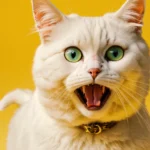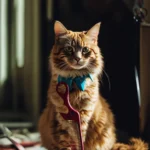Origin
The Siberian cat is a beautiful pet to have at home, with many qualities and an exuberant beauty. This breed has been recorded in Russia since the 15th century, but it may be older.
It is a robust cat with long fur that attracted attention and ended up being taken to Great Britain in the 19th century.
It was presented at the great cat fair at the Crystal Palace, along with several other cat breeds that were considered exotic to the British in 1871. As a result, they ended up falling into the favor of North Americans in the mid-1990s.
In the meantime, the breed ended up losing some space to the Persian breed in Great Britain. But before that, he left several articles about its characteristics.
The Siberian Cat or Siberian Forest Cat also made its name throughout the rest of Europe in the 1980s, being exported to Germany and worked to the standards we see today.
The breed is commonly called Siberian to avoid associations with the Norwegian Forest Cat. With its medium and imposing size, associated with its majestic coat, it attracts attention.
Features
The breed can reach an average of 90 cm in body and tail, and in males its weight can reach 9.0 kg and in females it can reach 7.0 kg. Like most large cats, its maturation takes longer than smaller cats, and in this breed it reaches around 3 years old, so it will be just a big puppy in your house, very playful and full of energy.
Their fur has a triple layer in winter, but in warmer seasons the third layer, making them less voluminous, but still presenting good volume on the neck, chest and a “hair” on the nape of the neck, being very silky, but brushing is recommended for better characterization of the fur, removal of dead hair and perhaps leaves. The fur is waterproof to protect against humidity and cold, a striking characteristic of wilder forest cats. Their structure is very strong, robust and well-muscled, and they are skilled hunters, functioning as working cats in pest control in homes.
Personality

Just like the Norwegian cat, the Siberian cat really enjoys interacting with its owner, it enjoys contact and caresses and even sitting on its owner’s shoulders, a very strong characteristic of its great companionship.
The breed is very sociable with other people and animals in the house, but likes to have its own space. Furthermore, because they are very close to their owners, it is very common for them to interact with meows and murmurs, enjoying a good conversation.
The breed is more rustic and does not have excellent health, with recurring problems with its coat, bones or vision. However, it is recommended that you pay attention when purchasing a specimen to minimize the likelihood of cardiomyopathy through selection and medical examinations. A good wet diet is recommended along with dry food, and plenty of water sources, as the breed loves water, especially playing in it.
At Polipet, you will find super premium dry and wet food to strengthen your cat’s body and ensure the development they need. Interactive toys such as mice, cat beds with balls and tug toys will stimulate their interest and cognitive development, as well as their overall health. Comfortable beds will always be welcome for them to settle down and rest.
How long does a Siberian cat live?
Approximately 15 years
How to identify a Siberian cat?
They have three-layer fur, which can be practically any color except chocolate and violet. They usually have green eyes, but blue is common.
Discover our services and discounts: Delivery , Pick up in store , Subscription , Cash Back , website , App , and much more, as we have products for your dog, cat , birds , rodents , fish and reptiles .





